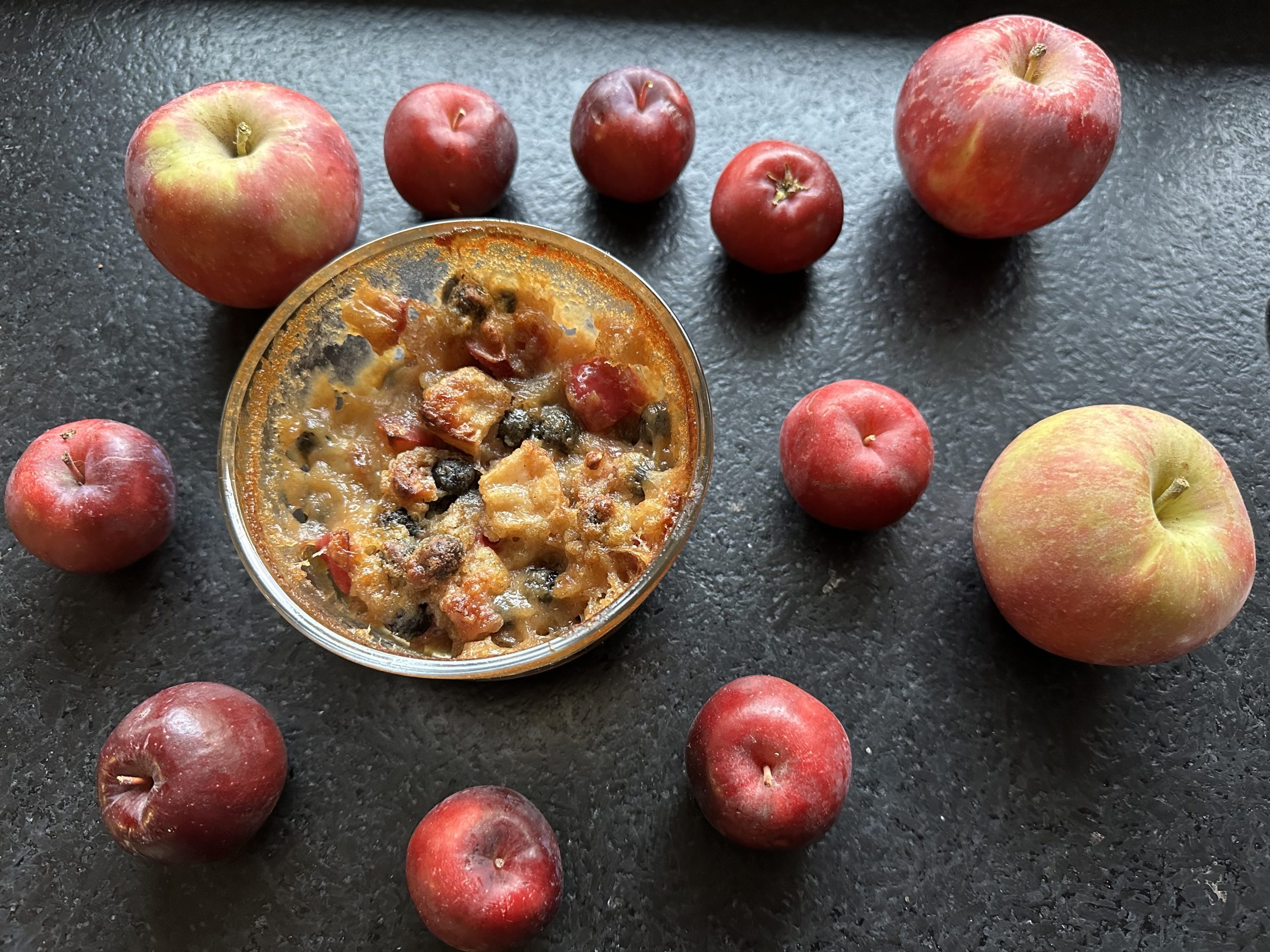Click here for the Word file Apple Boba pudding
How I like them apples
Apples can be work to eat, despite being full of sweet juice. Their tough skin requires energy to chew through, as does the rigid flesh. Hence the expression, “if you won’t eat an apple, you aren’t really hungry.”
Along the same lines, it is well-known that an apple cut into pieces will be more appetizing than a whole apple, because cutting through that skin makes it less work to eat. One night, while debating what to make for dinner with my kids, I cut a quick apple to tide them over, and of course they gobbled it down. I cut another. Same result. And another. Eventually, cut apples became an easy dinner all by itself. And the boys weren’t even hungry for dessert.
And if those cut pieces of apple and bake them with cinnamon, sugar, milk and vanilla pudding mix, the result is so delicious that it takes work to not eat it. Here, apple is not just a litmus test for hunger, but a trigger.
My apple pudding contains boba pearls, which are rolled balls of tapioca starch, commonly found in the popular beverage bubble tea. They have a texture that makes chewing fun. I like to use the black boba pearls, which look like berries.
Like the peel of a raw apple, boba pearls require energy to chew. But unlike the stiff apple skin that discourages the chewer, boba balls have just the right chewiness to keep you happily masticating, making it take longer to eat the same amount. Were the pudding to merely melt in your mouth without a fight, on the other hand, you’d end up spending less time with it.
Perhaps I’m biased, but I find this apple pudding to be a better use of boba than in bubble tea, where the tapioca balls taste bland, and are incongruous with the watery tea, and do little more than clog the straw. But in this pudding, the boba are more useful and integrated, adding texture to the tapestry of this chunky pudding. Although it is baked, making this pudding does not qualify as baking. Meaning anyone can do it, and the proportions need not be exact.
I have a friend with an orchard of unique crab apples. They are maroon-colored and deeply fragrant, with a flavor that reminds you that apples are in the rose family. Making the pudding with them was a fun change of pace from the batches of Macintosh-based pudding that I had been making. I then tried mixing both apple varieties in the same pudding, and that was the best version of all. I haven’t eaten much else for days, and I’m not complaining.
Boba Apple Pudding
This pudding is considered self-saucing, a southern term that means the sauce gets cooked with the dish, rather than being added at serving time. If you must serve it with anything, I suggest whipped cream.
Depending on where you live, finding boba pearls can be a little tricky. You might have to call around, or get them online.
Serves 4
1/2 cup black boba (or a full cup if you’re a serious boba-head)
1 cup milk
2 cups of apples, cut into ½-inch chunks, with or without peels
¾ cup flour
¼ cup brown sugar
¼ cup Jello (or similar brand) vanilla pudding
1 teaspoon cinnamon
1 teaspoon baking powder
¼ teaspoon salt
¼ cup butter
¼ cup brown sugar
1 cup hot water
Optional: whipped cream, for serving
Add the boba and milk to a small pot and cook for 10-15 minutes on low, until the boba are silky soft. Be careful not to scald the milk. When they are soft, let them stay soaking in the hot milk off the heat.
Preheat the oven to 375. In a medium-sized mixing bowl, combine the apples, flour sugar, pudding, cinnamon, baking powder and salt. Stir it all together. Add the boba and milk, and stir it again.
Spoon your pudding into a buttered baking dish, making sure to leave at least an inch of space before the rim.
When the pudding is loaded, add the butter, remaining sugar and hot water to the mixing bowl and leave it until the butter melts. Then stir it up and pour over the pudding. The sauce should barely cover the pudding, so just a few apple chunks are sticking out. And you want at least an inch of room to the edge.
For a two-inch deep dish of pudding, bake for about 50 minutes – until the liquid starts to dry up and the top looks brown and chewy. Allow to cool, which will make it chewier. Serve with whipped cream.
